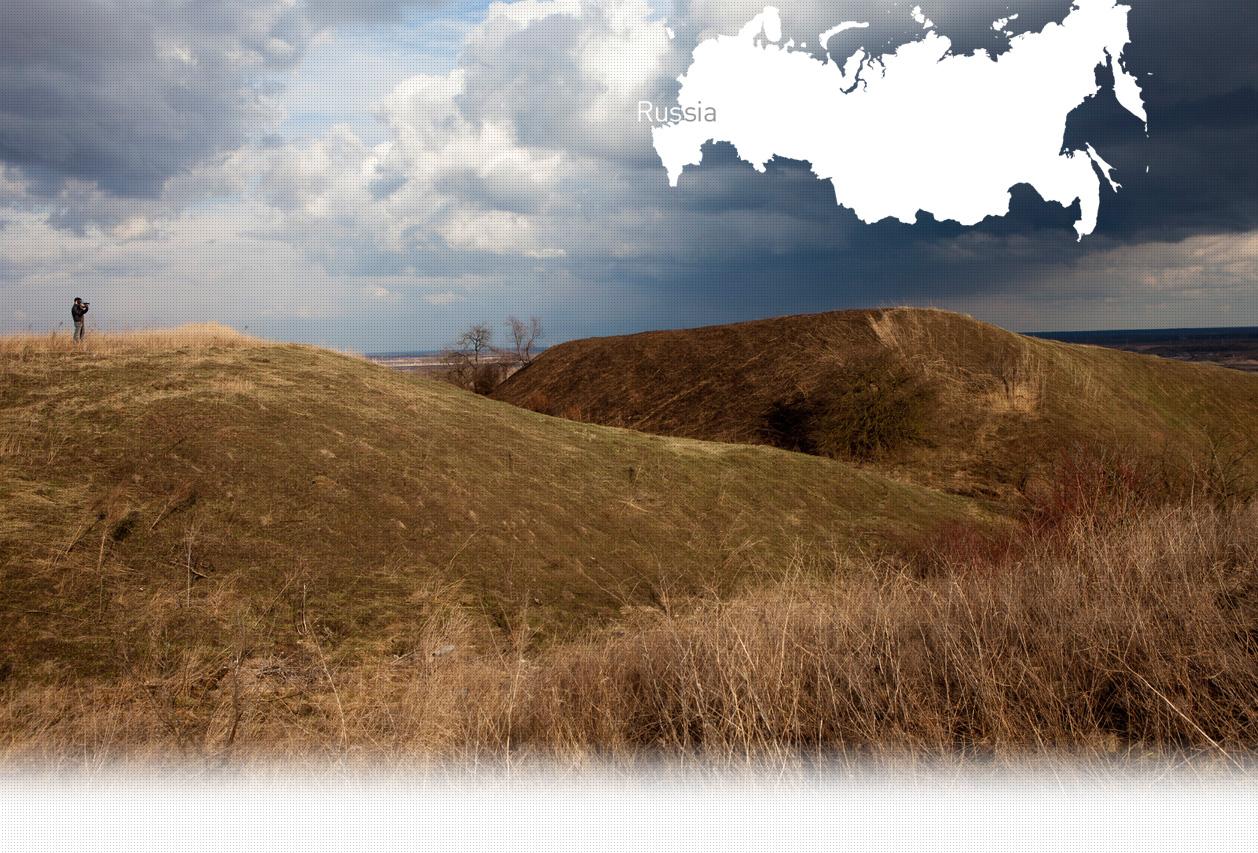

1 Killing site(s)
Viktor L., born in 1936: “When the mass bombings started, we hid in the basement of the raisoyuz building [local administration]. One morning, two SS soldiers entered the basement. Most probably they were from the Baltic countries because I knew their language. They told us to go outside, promising to not hurt us. We went out and came back home. Once home, we didn’t find our hens, except for one that was attached by the leg. I think they didn’t take her thinking that it was ill. By that time, the Germans were already in the town. Next to this place, behind the building, there were anti-tank trenches with Soviet soldiers inside who had been most likely abandoned by their commanders. We didn’t understand why they stayed. My mother told them that the Germans were already in the town. We went towards the river and saw the Germans passing the river on boats. Some of them were about to pick up radishes and onions from the vegetable gardens. They were mostly Romanians who did that, though. When the German occupation was installed, the starosta was appointed. It was Golubenko, a local Russian man, who was appointed as starosta. He was the one who appointed other starostas in the villages and who created the police. Their main function was to denounce and round up people. The roundups were always carried out during the night. Following the arrests, the victims were taken to the prison, which, by the way, was overcrowded, as well as the basements [of the other buildings] of the town. Many people were arrested. Then, the shootings started.” (Witness n°796R, interviewed in Novyi Oskol, on May 8, 2018)
“I lived on Naberezhnaya Street during the German occupation of Novyi Oskol, and very often I saw German soldiers digging the pits on the banks of the Oskol river. Those pits were prepared for the Soviet civilians condemned to death by the German rascals. These despicable executions took place at night, from 10pm to 5am. When I knew that a pit had been dug during the day, I held my breath, and, filled with hate, I listened to the slightest sound and gunshot. I stayed at home because I couldn’t go out often. A German officer and his auxiliary stayed at my house and watched me. Usually, there were between eight and ten gunshots. The following morning, I would find out the filled-in pit. Sometimes I would find the filled in pit without hearing any gunshots at night. Nevertheless, the step traces left on the ground indicated that the condemned [people] were brought towards the pit on foot. One must believe that they were suffocated on the spot or even buried alive. The pits weren’t covered well all the time. Sometimes, they were filled in with a thin layer of soil in order to reuse it for other victims the next night.” [Deposition given by Vasil B., born in 1886, resident of Novyi Oskol to the Soviet State Extraordinary Commission in 1943; GARF 7021-29-6]
Novyi Oskol is a Russian town located 90km (56mi) northeast of Belgorod. The settlement was founded in 1637 as a fort. In 1647, it became a town named Tsaryov-Alekseev after Tsar Alexis of Russia. In 1655, it was renamed to Novyi Oskol to distinguish it from Stary Oskol (Old Oskol), which was located more to the north. According to historical sources, only 18 Jews lived in Novyi Oskol in 1939. The majority of Jews were merchants or occupied liberal professions.
Novyi Oskol was occupied by the Germans and Hungarians in early October 1941. Through extensive field research, Yahad-In Unum discovered that the invaders brought about fifty Hungarian Jews with them. These Jews were used for forced labor, including repairing railroads. The local Jews, including the Aronov family, were murdered in July 1942 along with the non-Jewish civilian population and some Soviet prisoners of war. In all, 40 civilians and about a hundred POWs were massacred during that period. The Germans and Hungarians conducted the shootings with the help of local police. The victims were forced to undress and were shot in groups of five into the pit. After the execution, five policemen guarded the covered pit for 24 hours. According to eyewitnesses, Italian soldiers were present and taking pictures of the executions.
Do you have additional information regarding a village that you would like to share with Yahad ?
Please contact us at contact@yahadinunum.org
or by calling Yahad – In Unum at +33 (0) 1 53 20 13 17